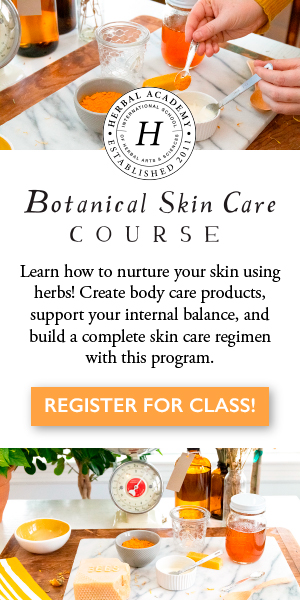
by Leslie Moldenauer | | Body, Essential Oils, Uncategorized
Reclaiming balance and joy through nurturing the feminine essence is a transformative journey that many women embark on in today’s fast-paced world. In this exploration of the delicate interplay between feminine and masculine energies, we delve into the reasons behind widespread burnout and offer practical insights.
Discover actionable exercises, journaling prompts, and self-care practices to guide women back to their authentic selves. Learn how incorporating products like magnesium lotion can enhance this journey, providing a holistic approach to well-being and reclaiming the beauty of the feminine spirit.
Life Can be a Blur
In our fast-paced world, where the demands of daily life often leave us feeling drained and overwhelmed, the delicate balance between feminine and masculine energies can be easily disrupted as women wear many hats and take on all.the.things!
This is not about boys not crying or girls not playing in the dirt, both of which are BS.
Modern society often celebrates qualities associated with masculine energy, such as productivity, competition, and achievement, while undervaluing feminine energy’s nurturing, intuitive, and creative aspects. Consequently, many of us are caught up in a perpetual cycle of burnout as we strive to meet unrealistic expectations, neglecting our need for rest and self-care.
We all have both energies within us, and it is in that balance that we feel at peace. That balance does look different for everyone, as we are all unique and beautiful beings. For women, being out of balance with these energies may make you feel like things are out of your control, and externals constantly force you to prioritize work over your self-care.
Did that hit hard?
Are you guilty of saying to yourself..” After xyz, I will slow down?”
Do you feel responsible for others’ happiness or healing?
Have you tackled your to-do list/priorities with gusto (adrenaline) and then felt exhausted afterward, possibly feeling guilty for taking that rest? We are in an era perpetually ruled by the masculine. Do more, work harder, and fix the world’s (friends/family/coworkers) problems.
I am NOT saying women should not hold power or have leadership roles. We clearly can do anything we set our minds to. Embracing the essence of femininity involves integrating qualities such as receptivity, yielding, flow, and embracing cyclical patterns. It calls for a spirit of collaboration and the willingness to acknowledge and embrace the depths of the unknown.
When to ask for help. When to rest. When to surrender. Balance is only possible, and the result will eventually be some form of burnout.
This article explores the importance of reconnecting with feminine energy, particularly for women. It offers practical exercises, journaling prompts, and incorporating self-care products like magnesium lotion and herbal tinctures to foster a return to balance, joy, and wellbeing.
Nurturing the Feminine Essence
Mindful Exercises
Mindfulness is not an elusive state reserved for meditation experts; it is a practical and accessible skill anyone can cultivate. It involves intentionally directing our attention to the present and acknowledging thoughts and feelings without becoming overwhelmed. This practice encourages a non-reactive and compassionate stance towards ourselves and our world.
Try practicing a few activities that connect you with your body and emotions. Practices like yoga, dance, or mindful breathing can help you ground yourself in the present moment and tap into your feminine energy.
Start with Breath Awareness
Begin your mindfulness journey by focusing on your breath. Take a few moments each day to observe your breath without trying to change it. Pay attention to the sensations of each inhale and exhale, grounding yourself in the present moment. Feel the sensations in your body. Pick one and observe it—pain, tingling, tightness, etc.
Mindfulness shifts you out of your sympathetic nervous system—fight, flight, freeze—into your parasympathetic nervous system- rest and restore.
Embrace the Senses
Engage your senses by intentionally tuning in to the sights, sounds, smells, tastes, and textures around you. Whether savoring a meal, feeling the warmth of sunlight, or listening to the rustle of leaves, immersing yourself in sensory experiences fosters mindfulness. Practice this, then sit quietly and notice how you feel before returning to a task in your day.
Set Mindful Moments
Dedicate specific times during your day to engage in short mindfulness exercises. This could be as simple as a three-minute breathing exercise or a brief body scan. These intentional breaks create pockets of calm and clarity amid the busyness of daily life.
Nonjudgmental Awareness
Observe your thoughts without attaching judgment. Allow thoughts to come and go, acknowledging them without getting caught up in an evaluation cycle. Cultivating a nonjudgmental mindset fosters a sense of acceptance and presence, which is especially helpful during conversations with others.
Practice attentive listening during conversations. Instead of formulating responses in your mind, genuinely focus on the words spoken, the tone, and the emotions conveyed. This fosters genuine connection and enriches your interpersonal relationships.
Journaling for Self-Discovery
Create a sacred space for self-reflection through journaling. Explore your thoughts and emotions, unraveling the layers of your experiences. Use prompts like “What brings me joy?” or “What activities make me feel most connected to my authentic self?” to guide your reflections.
Rob Dial, aka The Mindset Mentor, has an excellent system for journaling if you are unsure where to begin (Not an affiliate). Follow this link for more https://www.dialedinjournal.com/training2
Embracing Joyful Pursuits
Identify activities that bring you genuine happiness and make time for them regularly. Whether reading, painting, gardening, or simply taking a leisurely walk, these moments of joy replenish your feminine energy and contribute to your overall wellbeing.
Try this prompt, which I have been doing yearly for nearly a decade: Write down what brings you joy! Take at least 20 minutes for this exercise. You will stall and hit walls where you think you cannot possibly think of anything else. Keep pushing through the entire 20 minutes. It may seem silly now, but I do this in hopes of seeing how I am doing in inserting as much joy into my life as possible. This may be a great barometer for you as well.
Connecting with Self-Care Products
Magnesium Lotion
Magnesium lotion is one example of a potent ally in fostering a connection with the parasympathetic nervous system, often called the “rest and digest” system.
Magnesium, a crucial mineral for overall wellbeing, promotes relaxation and tranquility. As this soothing lotion is absorbed through the skin, it facilitates the replenishment of magnesium levels, prompting a cascade of physiological responses that activate the parasympathetic nervous system. This activation triggers a state of calmness and balance, helping to alleviate stress, tension, and anxiety.
By incorporating magnesium lotion into your self-care routine, you nourish your skin and create a pathway to tap into the profound restorative capacities of your parasympathetic nervous system, allowing for a more serene and centered existence amidst life’s daily demands. Click through to learn more!
You can change the script!
Reclaiming the beauty of feminine energy is essential for personal wellbeing and breaking free from the burnout cycle. By incorporating mindful exercises and journaling, you can rediscover the joy and balance of embracing your authentic feminine essence.
Remember, the key lies in honoring and nurturing the unique qualities that make you a woman, allowing your light to shine brightly in a world that desperately needs the harmonious dance of feminine and masculine energies.
Be well, Leslie
The Lost Art of Breathing: Why Have we Forgotten?
Nutritional Approaches to Stress and Anxiety

by Leslie Moldenauer | | Body, Essential Oils
In the ever-evolving world of wellness, cannabinoids have taken center stage. CBD, with its fan-following for pain relief, has become the cool kid on the block. But have you heard about CBG? It’s like the unsung hero of the cannabinoid crew, quietly making waves in the realm of inflammation and pain relief. In this short piece, we’ll dive into the world of CBG for pain sufferers.
Unveiling CBG’s Benefits
CBD may have stolen the spotlight, but CBG (cannabigerol) is emerging as the rising star with its unique benefits. While CBD primarily interacts with the endocannabinoid system, CBG takes a different route. It influences the CB1 and CB2 receptors, known for their roles in pain perception and inflammation regulation (Turcotte et al., 2016).
CBG vs. CBD: The Showdown
Let’s set the stage for a friendly face-off between CBG and CBD in the arena of pain relief. CBD, known for its versatility, has been a go-to for many seeking a natural remedy. However, CBG is stepping up, offering potentially more potent anti-inflammatory and analgesic effects. Think of it as CBD’s cool cousin with a knack for turning down the volume on pain.
The Entourage Effect
Now, don’t get us wrong – CBD is fantastic. But here’s where CBG adds its flair to the mix. When combined with CBD and other cannabinoids, CBG contributes to what’s known as the entourage effect, much like we often talk about with the synergy of both essential oils and herbs. This synergistic collaboration enhances the overall therapeutic impact, making the combination greater than the sum of its parts. It’s like a cannabinoid dream team working together to fight pain and inflammation.
CBG: The Underdog in Research
While CBD has been in the limelight for a while, CBG is still the underdog regarding research. However, preliminary studies on CBG are promising. Research suggests that CBG may be a powerful ally in managing conditions like chronic pain, inflammation-related disorders, and even neurodegenerative diseases.
You can read more here https://www.ncbi.nlm.nih.gov/pmc/articles/PMC8467477/ and here https://www.verywellmind.com/cannabigerol-cbg-uses-and-benefits-5085266
A Breath of Fresh Air for Chronic Pain Sufferers
For those grappling with chronic pain, CBG could be a breath of fresh air. Its potential anti-inflammatory properties make it a compelling option for arthritis and muscle spasms. Imagine saying goodbye to the daily struggles and welcoming relief from the clutches of persistent pain – that’s the promise CBG brings to the table.
CBG: The Gentle Giant
What sets CBG apart is its gentle nature. Some users report that CBG doesn’t induce the same sedative effects as certain pain medications or even CBD. It’s like the gentle giant of the cannabinoid family – providing relief without the unwanted side effects that often accompany traditional pain management solutions.
As CBD continues to dominate the wellness scene, CBG is quietly but confidently stepping into the spotlight. While more research is needed to understand its potential fully, early signs suggest that CBG could be a game-changer in pain relief. So, if you’ve been on the CBD train and are open to trying the next big thing, give CBG a friendly nod – your body might thank you for it. Here’s to exploring the uncharted territories of cannabinoids and finding the relief you deserve!
References
Kogan, N. M., Lavi, Y., Topping, L. M., Williams, Richard. O., McCann, F. E., Yekhtin, Z., Feldmann, M., Gallily, R., & Mechoulam, R. (2021). Novel CBG derivatives can reduce inflammation, pain and obesity. Molecules, 26(18), 5601. https://doi.org/10.3390/molecules26185601
Ohwovoriole, T. (2023, June 12). What is Cannabigerol (CBG)?. Verywell Mind. https://www.verywellmind.com/cannabigerol-cbg-uses-and-benefits-5085266
Turcotte, C., Blanchet, M.-R., Laviolette, M., & Flamand, N. (2016). The CB2 receptor and its role as a regulator of inflammation. Cellular and Molecular Life Sciences, 73(23), 4449–4470. https://doi.org/10.1007/s00018-016-2300-4
Learning How our Body Reacts to Chronic Stress
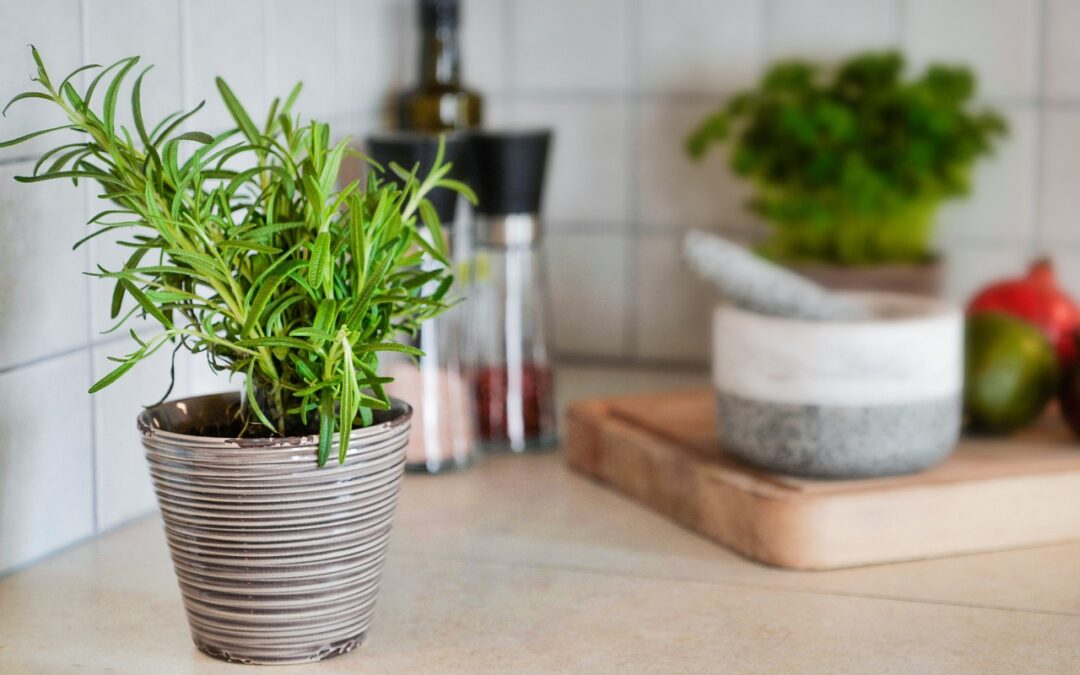
by Leslie Moldenauer | | Essential Oils, Food, Herbs
Step into the enchanting realm of rosemary, where fragrance meets functionality. As a seasoned holistic health practitioner, I am eager to unravel the secrets of this herb that transcends culinary delight, offering a wealth of beauty and health benefits. Join me on this aromatic journey as we explore rosemary’s beauty and health benefits, its profound impact on skin health, and its memory enhancement abilities.
Rosemary in the Kitchen
Adding rosemary to your kitchen dishes enhances flavor and is rich in nutrients, bringing various health benefits. Here are some of the health advantages of incorporating rosemary into your culinary creations:
Antioxidant Powerhouse:
Rosemary is rich in antioxidants, such as rosmarinic acid and carnosic acid, which help neutralize free radicals in the body (Nieto et al., 2018). This antioxidant activity may contribute to overall health and well-being.
Anti-Inflammatory Properties:
The anti-inflammatory compounds in rosemary, including rosmarinic acid and polyphenols, may help reduce inflammation in the body. Chronic inflammation is linked to various health issues, so incorporating anti-inflammatory herbs like rosemary can be beneficial.
Digestive Aid:
Rosemary has traditionally been used to support digestion. It may help alleviate indigestion and bloating by promoting the production of digestive enzymes, making it a valuable addition to meals (Johnson, 2021).
Flavor Enhancement:
Finally, rosemary adds a delightful flavor to dishes. Using herbs like rosemary allows you to reduce the need for excessive salt or unhealthy fats, making your meals not only tastier but also more health-conscious.
Remember, moderation is vital, as culinary herbs are typically used in small quantities. Whether sprinkled on roasted vegetables, infused into oils, or used to season meats, the addition of rosemary can enhance both the taste and health profile of your dishes.
Recipe: Rosemary Infused Lemon Roast Chicken
Ingredients:
One whole chicken (organic is always my choice)
Two lemons
Fresh rosemary sprigs
Olive oil
Salt and pepper to taste
Instructions:
Preheat your oven to 375°F (190°C). Rub the chicken with olive oil, salt, and pepper.
Stuff the cavity with lemon slices and fresh rosemary sprigs.
Place the chicken in a roasting pan and roast until golden brown and fully cooked.
Garnish with more fresh rosemary before serving.
Rosemary as a Herbal Remedy
Skin Soothing Elixir:
Beyond the kitchen, rosemary boasts skin-nurturing properties. Its essential oil, extracted from the leaves, is a beauty elixir known for its antimicrobial and antioxidant benefits. It can revitalize the skin, reduce inflammation, and even promote hair growth (MelanieStOurs, 2020).
DIY Herbal Hair Rinse
Ingredients:
Two tablespoons dried rosemary leaves
Two cups water
One tablespoon of apple cider vinegar
Instructions:
Boil the rosemary leaves in water for 10 minutes.
Let the mixture cool, then strain out the leaves.
Add apple cider vinegar to the rosemary-infused water.
After shampooing, use it as a final rinse to promote shine and scalp health.
We all know that herbs contain vitamins, minerals, antioxidants, phytonutrients, protein, and much more. They are powerhouses for our health, can be used for many things that ail us, and are powerful tools to restore homeostasis. Herbal medicines are just one type of dietary supplement. They are sold as tablets, capsules, powders, teas, extracts, and fresh or dried plants. Essential oils, however, contain no nutrition and, therefore, cannot be considered supplements. Read more about this here.
Rosemary Essential Oil

Memory-Boosting Marvel:
Rosemary essential oil, derived from the leaves of the rosemary plant through steam distillation, is a versatile and aromatic oil with a range of potential health benefits. Here are some of the notable benefits associated with rosemary essential oil:
Hair Growth and Scalp Health:
In addition to the plant material, the essential oil stimulates hair growth and improves overall scalp health. It may enhance circulation to the scalp, promote hair follicle strength, and prevent premature hair loss. Mixing a few drops of rosemary oil with a carrier oil and massaging it into the scalp can be an invigorating treatment for hair care. Some add it to their shampoo, which also works as well, but I would add the desired amount of shampoo and essential oil into a small container and mix well before use rather than store the oil in your shampoo bottle long term due to the plastics in the bottle and chemistry of the mixture.
Memory Enhancement and Cognitive Function:
The aroma of rosemary essential oil has been linked to cognitive benefits. Inhaling the scent of rosemary may improve memory retention, alertness, and overall cognitive performance (Hussain et al., 2022). Diffusing rosemary oil in your workspace or using it in aromatherapy may help create a mentally stimulating environment.
Respiratory Aid and Decongestant:
Rosemary oil has natural anti-inflammatory and antimicrobial properties that can benefit respiratory health. Inhaling the vapor of rosemary oil may help alleviate respiratory issues, including congestion, colds, and allergies. You can add a few drops to a bowl of hot water or use it in a steam inhalation.
Pain Relief and Muscle Relaxation:
Rosemary oil applied topically may provide relief from muscle pain and tension. Its analgesic properties can help alleviate discomfort and improve circulation when massaged onto sore muscles or joints.
It’s important to note that while rosemary essential oil offers potential benefits, individual responses can vary. Always perform a patch test before applying essential oils to the skin and consult with a healthcare professional, especially for pregnant individuals, nursing mothers, or those with existing health conditions. Moderation and proper dilution are critical when using essential oils for health purposes.
Memory-Enhancing Diffuser Blend
Ingredients:
Three drops of rosemary essential oil
Two drops of peppermint essential oil
Two drops of lemon essential oil
Instructions:
Mix the essential oils in a small bottle.
Add a few drops to your diffuser and let the aroma envelop your space.
Looking to buy the oil? I recommend Stillpoint Aromatics. Be sure to tell Joy I sent you!
In the enchanting world of herbs, rosemary is a versatile and beneficial ally. Whether gracing your culinary creations, pampering your skin, or boosting your cognitive prowess, rosemary is a fragrant reminder that nature provides sustenance and holistic well-being. So, embrace rosemary’s beauty and health benefits—let it be your aromatic accomplice on the journey to vibrant living!
References
Hussain, S. M., Syeda, A. F., Alshammari, M., Alnasser, S., Alenzi, N. D., Alanazi, S. T., & Nandakumar, K. (2022). Cognition enhancing effect of rosemary (rosmarinus officinalis L.) in lab animal studies: A systematic review and meta-analysis. Brazilian Journal of Medical and Biological Research, 55. https://doi.org/10.1590/1414-431x2021e11593
MelanieStOurs. (2020, February 7). Rosemary’s benefits for skin & hair care + how to use it at home. mindbodygreen RSS. https://www.mindbodygreen.com/articles/rosemary-oil-for-hair-loss-skin-care-and-diy-recipes
Nieto, G., Ros, G., & Castillo, J. (2018). Antioxidant and antimicrobial properties of Rosemary (Rosmarinus officinalis, L.): A Review. Medicines, 5(3), 98. https://doi.org/10.3390/medicines5030098
Veenstra JP, Johnson JJ. Rosemary (Salvia rosmarinus): Health-promoting benefits and food preservative properties. Int J Nutr. 2021;6(4):1-10. Epub 2021 Jun 24. PMID: 34651071; PMCID: PMC8513767.
Please note that I am not a medical practitioner. The content of this website is provided for general informational purposes only and is not intended as, nor should it be considered a substitute for, professional medical advice. Do not use the information on this website for diagnosing or treating any medical or health condition. If you have or suspect a medical problem, promptly contact your professional healthcare provider. By using this website, you assume full responsibility and liability for your actions.
https://lifeholistically.com/astragalus-root-immune-system-support-respiratory-ailments/
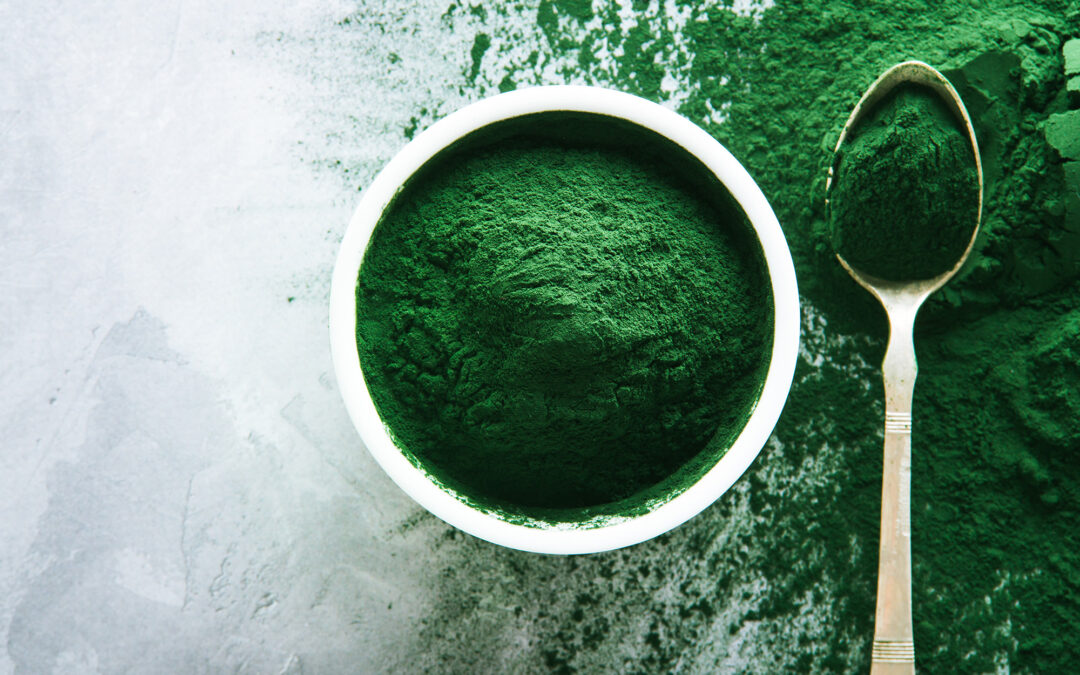
by Leslie Moldenauer | | Essential Oils, Food, Uncategorized
The term “superfood” is not a scientifically defined category, and its use can be somewhat subjective. The ‘foods’ I have decided to include here as superfoods are due to the broad range of nutrients and the fact that they are not consumed daily by many. I advocate for adding goodness to the daily diet that is not in pill form whenever possible. For that reason, I have chosen the top five superfoods that you should try today!
1. Spirulina: This blue-green algae is rich in protein, vitamins, and minerals. It’s known for boosting the immune system, improving gut health, and providing a clean energy boost.
Protein: Spirulina is a fantastic source of plant-based protein, making it an ideal addition for vegetarians and vegans. One tbsp of spirulina offers 4g of protein (Denise Mann, 2023).
Nutrients: Spirulina is known for its immune-boosting properties, thanks to its high concentration of vitamins like B6 and B12, iron, and magnesium.
Detoxifying: Additionally, spirulina is a potent detoxifier, aiding in removing heavy metals from the body (Bhattacharya, 2020).
Not all brands of spirulina are equal, and some can contain heavy metals, which spirulina should be removing from the body, not adding to the burden. I recommend trying the Nutrex Hawaii brand (Not an affiliate).
Here’s a simple and delicious way to incorporate spirulina into your diet:
Spirulina Smoothie Bowl
Ingredients:
1 cup of frozen berries
1/2 cup of spinach leaves
½ ripe avocado
1/2 cup of unsweetened hemp milk (other nut milk is ok too)
One teaspoon of spirulina powder
Toppings: sliced fresh fruit, granola, chia seeds, and a drizzle of honey (optional)
Instructions:
In a blender, combine the frozen berries, spinach leaves, avocado, hemp milk, and spirulina powder.
Blend until smooth and creamy, adjusting the milk quantity to achieve your desired consistency.
Pour the spirulina smoothie into a bowl.
Add your favorite toppings, such as sliced fresh fruit, granola, chia seeds, and a drizzle of honey for extra flavor.
Enjoy your vibrant and nutritious spirulina smoothie bowl, packed with essential nutrients and energy-boosting goodness!
2. Moringa: Moringa is often regarded as a superfood due to its exceptional nutritional content and health benefits. Here’s why it’s considered a nutritional powerhouse:
Rich in Nutrients: Moringa leaves are packed with essential vitamins and minerals. They contain high levels of vitamin C, vitamin A, vitamin E, calcium, potassium, and iron, making them a great source of key nutrients for overall health (Michael Greger M.D. FACLM, 2012).
Antioxidant Properties: Moringa is loaded with antioxidants, such as quercetin, chlorogenic acid, and beta-carotene. Generally speaking, antioxidants help combat oxidative stress and protect the body’s cells from damage.
Anti-Inflammatory: It has anti-inflammatory properties, which can help reduce inflammation in the body, which is the beginning of many chronic issues.
Blood Sugar Regulation: Some studies suggest that Moringa may help regulate blood sugar levels, which can be particularly valuable for individuals with diabetes (Phimarn et al., 2021).
The most common method of consuming Moringa is in powder form in smoothies, soups, or even sprinkled on salads. Start with a small amount and gradually increase your intake to suit your taste.
You can also drink it in tea form. It does not have an overwhelming taste but is subtle and mildly earthy. You can blend in with other herbs, such as lemon balm or peppermint, if you do not like the taste.
Remember to consult with a healthcare professional before adding significant amounts of Moringa to your diet, especially if you have any underlying health conditions or are pregnant, as there can be potential interactions or contraindications.
3. Bee Pollen: Bee pollen is often referred to as a “superfood” because it is packed with a wide range of nutrients and compounds that can provide various health benefits.
Nutrient-rich: Bee pollen is composed of flower pollen collected by bees and mixed with their saliva and nectar. It contains a wide array of essential nutrients, including vitamins such as B vitamins (great for stress) and vitamin C (great for immune health), minerals (like potassium, calcium, and iron), amino acids, and antioxidants. These nutrients can contribute to overall health and well-being.
Protein source: Bee pollen is a good source of high-quality protein, making it a valuable addition to the diet, especially for vegetarians and vegans.
Antioxidants: Bee pollen contains a variety of antioxidants, such as flavonoids, carotenoids, and polyphenols, which can help protect the body from oxidative stress and reduce the risk of chronic diseases. WebMD has some great information here for further reading.
Allergen desensitization: Some people consume bee pollen as a natural remedy for allergies (local honey is a great choice for this purpose). The idea is that regular exposure to small amounts of local pollen can help the body build tolerance and reduce allergy symptoms. This advice does NOT apply to severe allergies.
Bee pollen is not suitable for everyone. Some people may be allergic to bee pollen or experience adverse reactions. Start small to see how your body reacts. Always purchase from reputable sources
.
4. Mushrooms: There are many varieties worth noting in the top five superfoods that you should try today! I will raise my hand here and say that my whole life, I have despised the squeak of a mushroom in my mouth and have avoided them at all costs. As an adult, I still would rather not eat them on my plate, but I consume them in tinctures, enzymatic formulas, and pills. If you are interested in the nutrient and health value of a mushroom and its mycelia, read my blog here for further details on why mushrooms made my top five list of superfoods that you should try today.
5. Acerola Cherry: The most important nutrient that acerola cherry offers us is Vitamin C. Acerola cherries are one of the richest natural sources of vitamin C, which is essential for a healthy immune system, skin health, and overall well-being. Vitamin C is a powerhouse antioxidant, helping to protect cells from damage caused by free radicals.
Immune Support: The high vitamin C content in acerola cherries can help boost your immune system, making the body stronger to fight infections and illnesses (Mezadri et al., 2008). Reach for acerola cherry or other NON-GMO forms of vitamin C to assist when you are feeling under the weather to keep expectoration strong and healthy, potentially avoiding mucous from settling in the lungs.
Anti-Inflammatory Effects: The vitamin C content in acerola cherry makes it inherently anti-inflammatory. Here is more information on the anti-inflammatory benefits of vitamin C. The anti-inflammatory effects benefit nearly every system structure of the body.
While these superfoods may be less well-known, they offer unique health benefits and can be incorporated into a balanced and varied diet to enhance overall wellness. Always consult with a healthcare professional before making significant dietary changes. These top five superfoods are a great addition to the daily wellness routine.
References
Bhattacharya, S. (2020). The role of Spirulina (arthrospira) in the mitigation of heavy-metal toxicity: An appraisal. Journal of Environmental Pathology, Toxicology and Oncology, 39(2), 149–157. https://doi.org/10.1615/jenvironpatholtoxicoloncol.2020034375
Denise Mann, M. (2023, May 17). What you should know about spirulina benefits, nutrition, and more. The Healthy. https://www.thehealthy.com/nutrition/spirulina-benefits/
Mezadri, T., Villaño, D., Fernández-Pachón, M. S., García-Parrilla, M. C., & Troncoso, A. M. (2008). Antioxidant compounds and antioxidant activity in acerola (Malpighia emarginata DC.) fruits and derivatives. Journal of Food Composition and Analysis, 21(4), 282–290. https://doi.org/10.1016/j.jfca.2008.02.002
Michael Greger M.D. FACLM (2012, November 8). What are Moringa’s nutrition facts, benefits & side effects? NutritionFacts.org. https://nutritionfacts.org/questions/the-health-benefits-of-moringa/
Phimarn, W., Sungthong, B., & Wichaiyo, K. (2021). Efficacy and safety on moringa oleifera on blood glucose and lipid profile: A meta-analysis. Pharmacognosy Magazine, 17(74), 373. https://doi.org/10.4103/pm.pm_49_20
Nutritional Approaches to Stress and Anxiety
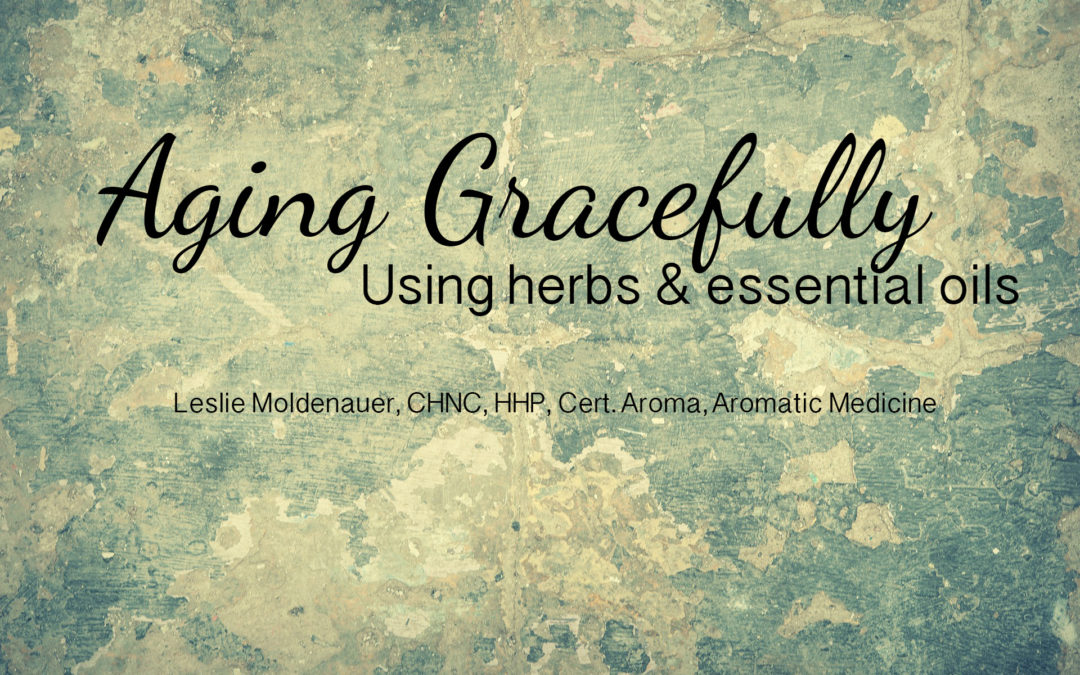
by Leslie Moldenauer | | Essential Oils, Herbs
Embracing the natural process of aging can be a beautiful journey, one that does not need to be marred by fear, uncertainty, or a desire to hold on to our youth. Not all of us can grow old, which can be a beautiful experience. Aging can be met with grace and vitality through the use of complementary therapies. Aging gracefully using complementary therapies is possible, all while being mindful of what products are being put on the skin and supporting the environment’s health. As we cross the threshold of 40, it becomes evident that our bodies require specific nutrients to maintain robust health and exude that youthful spunk we all cherish. However, the solution is more than purchasing many nutritional supplements. Nature generously provides us with everything necessary for our well-being, and in this blog, we will explore the nutrients that play a pivotal role in supporting us as we age.
While the allure of nutrient-packed pills may be tempting, it is essential to understand that there are often more effective and natural ways to obtain these vital substances. We will delve into herbal preparations that simplify nourishing our bodies, highlighting the benefits of these alternatives. However, aging gracefully is not limited to what we ingest; it is also about how we care for our skin and the areas of our bodies that matter most. Aromatherapy, a complementary modality, can be a game-changer in supporting our skin health and addressing the unique needs of women as they navigate through middle age and beyond.
Fundamental Nutrients for Over 40
B12
B12 is one of the vital nutrients needed for both men and women. It is imperative for brain function as well as digestion and absorption of the nutrients that are consumed on a day-to-day basis. Research shows that low levels of B12 are connected to skin concerns such as atopic dermatitis and acne (Brescoll & Daveluy, 2015). This nutrient, like others, is best consumed through living foods. The stigma that vegans and vegetarians cannot obtain adequate levels is false.
Edible algae in the form of spirulina is one great source of vitamin B12 (Moldenauer, 2023). Read more about that in the top five choices of superfoods to add to the diet. It is important to note that B12 differs from other B vitamins; it requires particular circumstances to obtain maximum absorption; therefore, many are deficient in this vitamin (be sure to do your research). B12 is a water-soluble vitamin, so it is best to obtain it in foods rather than expensive pills or sublingual sprays.
Calcium
Obtaining appropriate calcium levels is essential for heart health for both postmenopausal and menopausal women and is vital for strong bones (Vitamin D improves calcium absorption) (3). Calcium also regulates nerve function in the body for those under much stress. Conventional dairy is not Lifeholistically recommended for obtaining adequate levels of this critical mineral. A few healthy ways to obtain this mineral include chia seeds, almonds, dried figs, sunflower seeds, sesame seeds, kale, spinach, sweet potato, butternut squash, and broccoli, to name a few.
This research published by Experimental Gerontology stated that calcium plays a critical role in the aging epidermis, or the outer layer of skin (Rinnerthaler et al., 2015). Calcium is critical to maintaining skin barrier function, reducing the chances of dermatological concerns as we age
Vitamin D
Vitamin D supports a healthy immune system, and maintaining adequate levels is paramount for everyone. As mentioned above, Vitamin D is critical for the absorption of calcium.
Obtaining a small quantity of good old-fashioned sunlight is recommended. Only a little is needed; about 10-15 minutes of sunshine without sunscreen is sufficient and is the best way to obtain this fat-soluble vitamin produced in the skin. Just be sure to be responsible and protect the skin during peak times of the sun’s rays, 10 am to 2 pm, for further reading of the sunshine vitamin (technically a hormone).
*Remember that the most efficient way of getting D is sunshine.
Pills are Not Always the Answer
Buying expensive bottles of supplements may not be needed, and the reasons are multi-faceted.
*The cost of supplements is relatively high, especially the whole food variety. Whole food vitamins are costly because if it is a higher quality vitamin, the serving size will likely be 3 or 4 pills a day compared to 1 from an average lower quality vitamin. Buying vitamins requires thorough research.
*Value and purity. We must always use caution when purchasing vitamins in pill form. Be a label reader. There can be ingredients in the bottle that should never consumed. Those ingredients include lead, mercury, artificial colors, and more (Dorene Petersen, 2023).
*Mega dosing is an issue. A quick search to purchase vitamin B12 will show that some products contain tens of thousands more than the daily recommended dose. Read more about this phenomenon here (Georgiou, 2022).
*There are some instances where severe deficiency requires a high dose for a short time. Before implementing this in a daily wellness routine, Lifeholistically recommends getting tested by a doctor/naturopath if needed.
*Absorption of these nutrients can be questionable for some. Why is this? Often, the nutrients found in the bottle are considered synthetic or made in a lab rather than grown in the ground (whole food based). This can mean that it is a foreign substance to the body. On the flip side, if a vitamin were truly all-natural whole food-derived ingredients, it would be necessary to take four pills or more daily to obtain a serving, as previously mentioned. This excess consumption of pills contributes to much higher costs.
Herbs
The beauty of herbs is the nutrition and wisdom in which they contain. Unlike essential oils, which contain no actual nutrients (Moldenauer, 2019), herbs contain a plethora of goodness, yet in many circles, they are underutilized. When we look at holistic health as a whole, obtaining proper nutrition as a means to be healthy, strong, and preserve vitality is something that needs more focus. There are many herbs that we can highlight here. Let us look at a few and how we can incorporate them.
Alfalfa
Alfalfa is not one of the more common herbs on supermarket shelves, but it is so full of nutrition that one may never need a conventional multivitamin again!
One can purchase alfalfa seeds and sprout them to add to salads, which would contain a very high nutritional profile, or buy it in dried form from any reputable herbal shop. Alfalfa is slightly bitter and earthy in its dried form.
Sprouting seeds is easy and inexpensive. Kids love to watch them grow!
Alfalfa sprouts are rich in various vitamins such as A, B, C, and K, as well as minerals such as calcium, magnesium, potassium, selenium, and zinc (Wells, 2019). Vegetarian or vegan? Alfalfa contains plant-based protein, and consuming it lessens the impact on the planet by reducing meat consumption.
Sprouting is fun, too. Take a peek at this site that has the supplies to get started. Some favorites other than alfalfa are broccoli, beets, chia, and all varieties of micro greens.
Parsley
Parsley is a nutritious herb rich in vitamins K, C, and A. It also provides essential minerals like potassium and folate and antioxidants such as flavonoids and carotenoids (Morales-Brown, 2023).
Add fresh or dried parsley to meals, and throw a handful of fresh parsley in a smoothie. If feeling stressed, steep organic raw parsley into distilled water and drink the water throughout the day.
Stinging Nettles
What is so special about stinging nettle? The herb is rich in vitamins A, B6, K, calcium, magnesium, and potassium; stinging nettles is an herb that should be consumed more often (Very Healthy Life, 2021).
For herbal tea lovers, a great blend here would be equal parts of:
Stinging Nettle
Echinacea
Peppermint or Spearmint
Aromatherapy
Breast Health
Robert Tisserand’s breast oil is a solid blend based on science. Breast health should be important to every aging woman, and prevention, rather than treatment, is where we should focus. Here is a link to the background and research behind his recommendations (Tisserand, 2020). This recipe has evolved over the years; this is what Lifeholistically recommends:
Breast Health Formulation
Carrier Oil/CO2’s
1.5 oz Pomegranate carrier oil
One oz Rosehip Seed carrier oil
Three mls Pomegranate seed CO2
Three mls Sea Buckthorn Berry CO2
Three mls Rosehip CO2
Purchase CO2’s here
Essential Oils (approx a 1% dilution)
Ten drops Lemon Citrus limon
Five drops Bergamot Citrus bergamia
Six drops Copaiba Copaifera officinalis
Three drops Palmarosa Cymbopogon martinii var motia
Three drops Cedarwood Cedrus atlantica
*This blend contains phototoxic oils, so if applying this blend during the warmer, sunnier months, be sure not to expose that delicate skin to the sun’s rays (or tanning bed).
Lifeholistically was first introduced to breast oil many years ago by a friend that I met at a women’s retreat at an ashram in Texas. Her name is Sunny Andrew Markham, and her company is Earthsong. She produced the most lovely pomegranate oil blended only under the full moon. She is a huge advocate for breast health and daily breast self-care. She has moved on to other ventures, but Lifeholistically is grateful for her and her teachings.
Facial Serum
In addition to our breasts, taking care of our face, neck, and chest is essential for the natural aging process. We recommend this skin serum.
Formulation (2oz glass bottle-1% dilution)
½ oz Rosehip Seed carrier oil (Needed for the vitamin C
½ oz Sunflower carrier oil OR
½ oz Calendula infused sunflower carrier oil½ oz Evening Primrose carrier oil
Five drops pure vitamin E
Three drops German Chamomile CO2 Total or essential oil Matricaria chamomilla
Three drops Frankincense Boswellia frereana
*It is worth the extra effort to infuse dried calendula in a sunflower or apricot carrier oil.
There are many things that we can do to support our body and skin through the natural aging process, but the best weapons we have are our thoughts and our internal dialogue.
The more you realize that aging is a natural part of life, and the more you work to support it, not fight it…the happier you will be. Enjoy every stage. To your health!
References
Brescoll, J., & Daveluy, S. (2015). A review of Vitamin B12 in dermatology. American Journal of Clinical Dermatology, 16(1), 27–33. https://doi.org/10.1007/s40257-014-0107-3
Dorene Petersen, A. F. P. (2023, May 3). The hidden dangers in your dietary supplements: Achs.edu. Health and Wellness Blog. http://info.achs.edu/blog/5-dangerous-ingredients-in-your-vitamins-and-dietary-supplements
Georgiou, A. (2022, October 7). Cornell expert warns against megadosing vitamins. Newsweek. https://www.newsweek.com/megadosing-vitamins-health-risks-problems-1749826
Moldenauer, L. (2019, December 5). Essential oils-do they contain vitamins and minerals?. Lifeholistically. https://lifeholistically.com/essential-oils-vitamins-minerals/
Moldenauer, L. (2023, November 7). The top five superfoods that you should try Today. Lifeholistically. https://lifeholistically.com/top-five-superfoods/
Morales-Brown, P. (2023, June 15). Parsley: Health Benefits, facts, and research. Medical News Today. https://www.medicalnewstoday.com/articles/284490
Rinnerthaler, M., Streubel, M. K., Bischof, J., & Richter, K. (2015). Skin aging, gene expression and calcium. Experimental Gerontology, 68, 59–65. https://doi.org/10.1016/j.exger.2014.09.015
Sitaraman, D. S. (2022). Study of vitamin B12 levels among vegetarians in DAE Hospital. Journal of Medical Science And Clinical Research, 10(05). https://doi.org/10.18535/jmscr/v10i5.17
Very Healthy Life. (2021, August 13). 14 benefits of stinging nettle. Very Healthy Life. https://veryhealthy.life/14-benefits-of-stinging-nettle
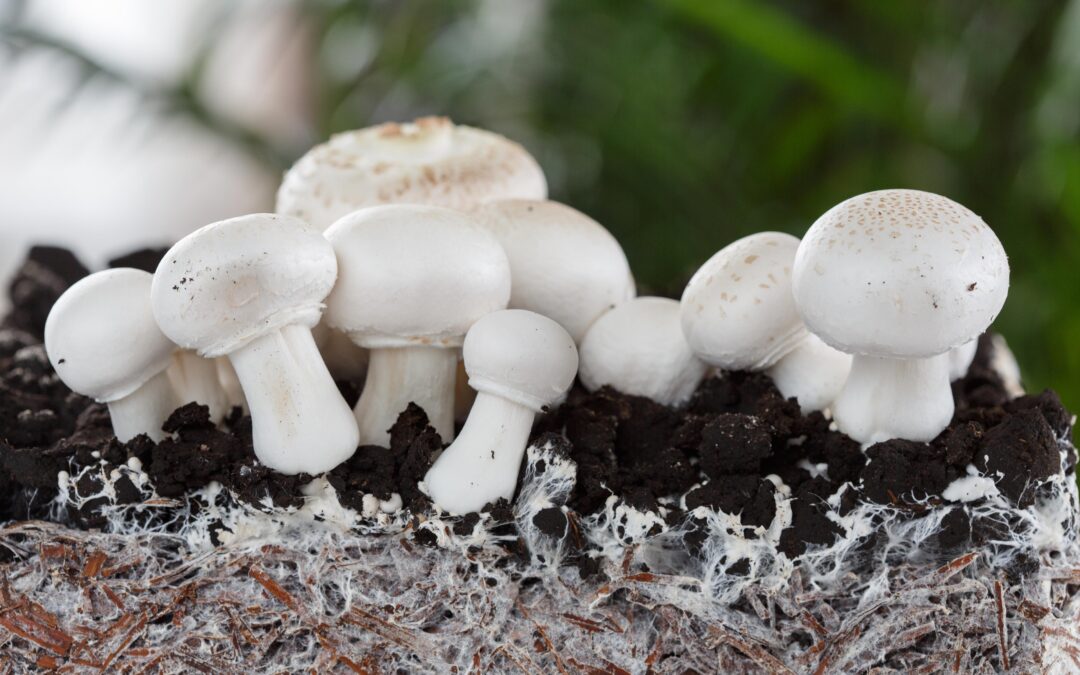
by Leslie Moldenauer | | Essential Oils, Mind
Digestive enzymes play the role of helping to break down our food by creating chemical reactions, which makes them invaluable in supporting our digestive system. These primary enzymes are amylase, which helps to break down starches and carbs into sugars; protease, which is responsible for breaking down proteins into amino acids; and lipase, which breaks down lipids commonly known as fats and oils. Mycelium found in the network of the root system of mushrooms is another source of enzymes and is a potent elixir for health. Some state that the mushroom’s fruiting body is the only part of the fungi worth consuming, but that is not the whole story. Welcome the miracle mushroom, mycelium polysaccharides for health.
Mycelium is the vegetative part of fungi, consisting of a vast network of delicate, thread-like structures called hyphae. It plays a crucial role in nutrient cycling and decomposition in ecosystems. It is truly fascinating how it supports life underfoot. Mycelium has garnered increasing attention for its potential health benefits, particularly in recent years. The health benefits of mycelium from mushrooms are vast, as many people are discovering. Think of mycelium as the plant’s immune system; this system or network allows the mushroom to thrive.
There are benefits to mycelium and the fruit body of a mushroom. Testing has shown that more beta-glucans (polymers) exist in the fruit body (soluble and insoluble forms). Still, we must look at the whole, not just a part of the mushroom to understand the big picture, including the complex system of mycelium (much like another powerhouse green plant we all know and love that is most beneficial as a full spectrum) and you will discover, not all heroes wear capes.
*Those reading this blog over the years know that essential oil distillation does not remove much of the plant’s chemical compounds, and to get as close to the profile of the plant as possible, CO2 extraction is much more valuable. When it comes to mushroom extracts, many active ingredients are not extracted in the hot water process, which is the same issue presented with steam-distilled essential oils. Hot water extraction is only one of many methods to extract valuable constituents for mushrooms, although it is the most common.
Mycelium is not simply dug up from the ground and processed for consumption; it must be grown, or the proper term, fermented. Most reputable companies use organic brown rice to accomplish this task, while others use organic oats.
Because of this, nay-sayers state that mycelium-based products are ineffective and pumped full of fillers. It turns out that is not the full story.
Enter the research that found that mushroom mycelium and its fermented substrate have potential health benefits (Fungi Perfecti, 2019).
To summarize the research:
-Mushroom mycelium is “incredibly potent in triggering immune cell function.”
-Even when separated from pure mycelium, fermented substrate (organic brown rice) effectively supports natural immune function.
-Pure mycelium and fermented substrate each offer unique yet complementary health benefits.
-Many constituents, not just beta-glucans, stimulate the immune-enhancing benefits of mushrooms. Think of this as the whole, not just a piece.
The research confirms that the beneficial mushroom mycelium and the fermented substrate used to grow the mycelium are both immunologically active. They cannot be separated. This is comparable to other fermented products we know and love, including kombucha, yogurt, and kefir.
Polysaccharides are another bioactive constituent in the fruiting body and the mycelium (Liu et al., 2016). A growing body of research shows that these polysaccharides play an essential role in healthy gut microbiota as a form of prebiotics. These polysaccharides have anti-inflammatory, anti-tumor, and anti-cancer properties (Hyder & Dutta, 2021). The fruiting body and mycelium also contain beta-glucans, which stimulate and boost the immune system, helping the body defend against infections and disease.
*This article was not written to diagnose or treat disease, only to inform.
Mycelium shines in several areas, including its ability to increase nutrient absorption. That is important for those with gut imbalances and possibly even leaky gut. Mycelium is adept at absorbing nutrients from its surroundings, making it a rich source of vitamins, minerals, and other bioactive compounds. Consuming it can supplement our diet with these essential nutrients, promoting overall health.
Mycelium is also known for breaking down complex organic compounds, including toxins and pollutants, into simpler molecules that can be excreted from the body, such as sugars and amino acids. Therefore, we can reasonably conclude that mycelium’s enzymes can also detoxify our terrain, supporting the body’s detoxification processes when consumed. This is the likely explanation for mycelium’s anti-tumor action.
Many say that the liver does a fine job at detoxifying our bodies; however, much like a glass that can only hold so much water before overflowing, our increasingly toxic environment, coupled with mineral loss in food and not eating well enough, leaves our liver unable to function as well as it could. Much literature suggests an association between impaired detoxification and diseases like cancer, Parkinson’s disease, fibromyalgia, and chronic fatigue/immune dysfunction syndrome (Liska, The Detoxification Enzyme Systems 1998). We cannot leave it all to our liver without providing it with additional support.
Antioxidant Properties
Some mushrooms and mycelia are rich in antioxidants, such as polyphenols and flavonoids. Antioxidants can help combat oxidative stress and reduce the production of harmful free radicals, which may play a role in detoxifying the body. Some mushrooms high in antioxidants include shiitake, lion’s mane, and reishi. Antioxidants lower oxidative stress, which supports heart health and brain function (Mandal, 2018).
Immune System Support
Certain mushrooms, like Reishi and Turkey Tail, have been studied for their immunomodulatory properties. A well-functioning immune system is crucial for the body’s defense against toxins and pathogens.
It is important to note that while there is research on the potential health benefits of various mushrooms and their mycelia, the field of mycology and its connection to human health is still evolving. Specific effects and mechanisms of action can vary depending on the type of mushroom and its bioactive compounds.
It is essential to note that mycelium’s health benefits are still an active area of research, and while promising, more studies are needed to fully understand its mechanisms and potential. Mycelium is commonly consumed in various forms, such as dietary supplements, teas, and culinary dishes. However, consulting with a healthcare professional before incorporating it into a daily routine is advisable, especially if specific health concerns or conditions exist.
I am not a mushroom supplement company affiliate, but have a purchase criterion. Look for organic and sustainable. Look for a company that offers both the fruiting body and the mycelium. Stay tuned for future articles on the subject, as this is just the tip of the miracle mushroom iceberg.
To your health,
Leslie
References
Benson, K. F., Stamets, P., Davis, R., Nally, R., Taylor, A., Slater, S., & Jensen, G. S. (2019). The mycelium of the trametes versicolor (Turkey tail) mushroom and its fermented substrate each show potent and complementary immune activating properties in vitro. BMC Complementary and Alternative Medicine, 19(1). https://doi.org/10.1186/s12906-019-2681-7
Fungi Perfecti, L. (2019, December 6). Immune benefits of mushroom mycelium & fermented substrate validated by peer-reviewed science. PR Newswire: press release distribution, targeting, monitoring and marketing. https://www.prnewswire.com/news-releases/immune-benefits-of-mushroom-mycelium–fermented-substrate-validated-by-peer-reviewed-science-300970408.html
Hyder, M. S., & Dutta, S. D. (2021). Mushroom-derived polysaccharides as antitumor and anticancer agent: A concise review. Biocatalysis and Agricultural Biotechnology, 35, 102085. https://doi.org/10.1016/j.bcab.2021.102085
Liska, D. (1998). The Detoxification Enzyme Systems. October 17, 2023, http://anaturalhealingcenter.com/documents/Thorne/articles/DetoxificationEnzymes.pdf
Liu, X.-C., Zhu, Z.-Y., Tang, Y.-L., Wang, M., Wang, Z., Liu, A.-J., & Zhang, Y.-M. (2016). Structural properties of polysaccharides from cultivated fruit bodies and mycelium of cordyceps militaris. Carbohydrate Polymers, 142, 63–72. https://doi.org/10.1016/j.carbpol.2016.01.040
Mandal, Dr. A. (2018, August 23). Mushrooms contain high amounts of antioxidants that combat aging and promote health. News. https://www.news-medical.net/news/20171109/Mushrooms-contain-high-amounts-of-antioxidants-that-combat-aging-and-promote-health.aspx
Rubel, R., Santa, H. S., dos Santos, L. F., Fernandes, L. C., Figueiredo, B. C., & Soccol, C. R. (2018). Immunomodulatory and antitumoral properties of ganoderma lucidum and Agaricus brasiliensis (agaricomycetes) medicinal mushrooms. International Journal of Medicinal Mushrooms, 20(4), 393–403. https://doi.org/10.1615/intjmedmushrooms.2018025979
Astragalus Root for Immune System Support and Respiratory Ailments










